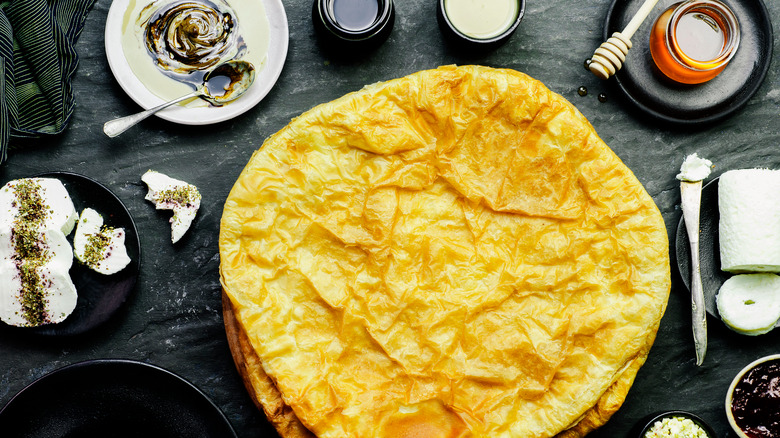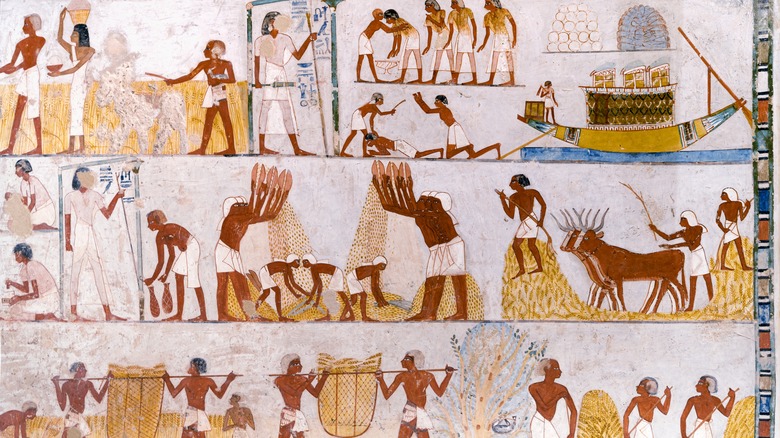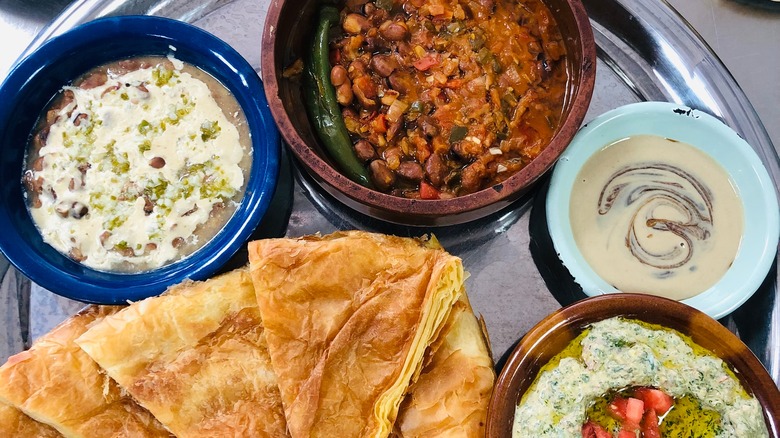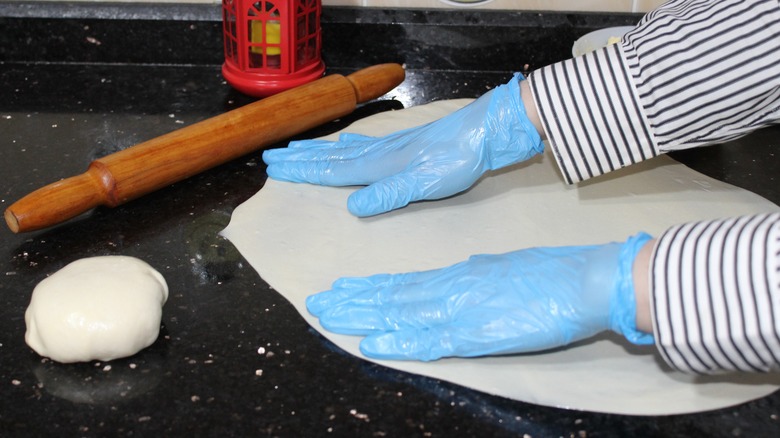Egyptian Fiteer Pastry Was Originally An Offering To The Gods
Fiteer meshaltet, typically referred to simply as fiteer, sometimes spelled feteer or fetir, is a traditional Egyptian dish made from layers of crispy pastry. As Taste Atlas explains, fiteer is typically made with fillings folded into dough and can be served as either a sweet or savory dish.
While the simple, flaky bread dates back to ancient times, it is still widely popular: variations are now found across Egypt and the surrounding areas. Fiteer can vary by region, as Mediterranean and Middle Eastern food blog Amira's Pantry notes. Alexandria is famous for a type of fiteer that resembles pizza, topped with cheese, vegetables, and meat. In contrast, the city of Ras-Al-Bar boasts a sweet version of the flaky pastry, often served with powdered sugar.
No matter how it's served, fiteer has been associated with Egypt for thousands of years — and thanks to its continued popularity, it will likely remain an Egyptian staple for many more.
The history of fiteer
In "The Pharaoh's Kitchen," Magda Mehdawy and Amr Hussein provide a nuanced view of ancient Egyptian cuisine. While no recipes survive, scholars believe that remnants of ancient Egyptian cuisine live on — especially in southern Egypt, where cooks weren't exposed to Greek, Roman, and Ottoman influences.
Ancient Egypt was typically a prosperous place, and food was abundant. Egyptians frequently held banquets for the gods, where they would provide offerings of meat, bread, fruit, and honey. They also provided food for the dead: many Egyptian tombs contained remnants of food or wine, which ancient Egyptians believed would sustain their loved ones in the afterlife.
According to Culture Trip, fiteer served as one of the foods offered to the Ancient Egyptian gods. Even after the reign of the pharaohs, fiteer remained a staple of Egyptian cuisine. Now, it's served at special events like weddings and religious celebrations. Modern Egyptians serve it to friends, visitors, and family members as a symbol of hospitality and generosity.
What are the ingredients of fiteer?
While the dough is simple, fiteer can be spruced up with a near-endless variety of add-ons. The basic ingredients for the dough are ghee, flour, water, and salt, though some recipes include sugar or baking powder. However, Taste Atlas explains that while some versions of fiteer are served plain, the delicacy is typically eaten with side dishes or fillings. A wide variety of ingredients like meats or sausages, cheese, halwa, nuts, vegetables, and raisins are served as toppings or folded into the dough to add texture and flavor. Popular Middle Eastern sauces, like tahini, honey, or molasses, can be drizzled on top.
Despite fiteer's ancient roots, modern bakers have adapted to the times. While fiteer made with traditional ingredients is still widely available, modern foods like Nutella are also popular fillings. The National writes that you can even find vendors selling fiteer made with molten Kraft cheese.
How is fiteer made?
While the standard ingredients are simple, fiteer can be tricky to master. Made by folding layers of ghee into a simple dough, fiteer is essentially a form of lamination. As The Kitchn explains, laminated dough is formed by repeatedly folding thin layers of butter into sheets of dough to create layers of thin, flaky pastry. When the dough is baked in a piping-hot oven, the water evaporates, puffing up the pastry. This is what gives puff pastry and croissants their signature flake — and it's one reason why they're notoriously difficult to perfect.
Over the millennia, Egyptian bakers have turned the process of laminating fiteer into an art form. The National describes how professional bakers sling fiteer dough through the air like a chef tossing a pizza, spinning it until it's translucent. Then, bakers top the paper-thin pastry with fillings before folding it into a circle and baking it until crispy.
However, you don't have to be a skilled pastry chef to make fiteer: as Taste Atlas explains, it's possible to make at home. If you don't have the skills to toss the dough like an Egyptian chef, you can use your hands or a rolling pin instead.



